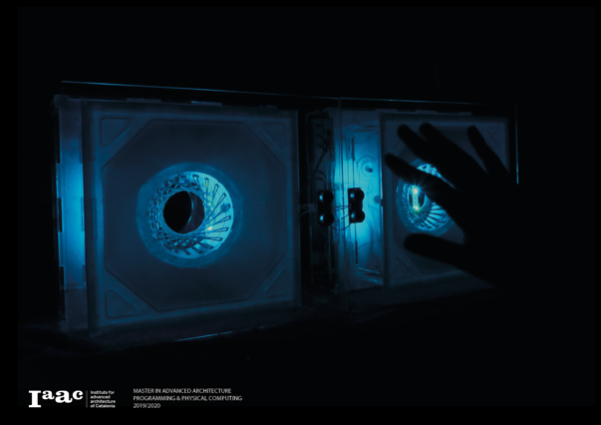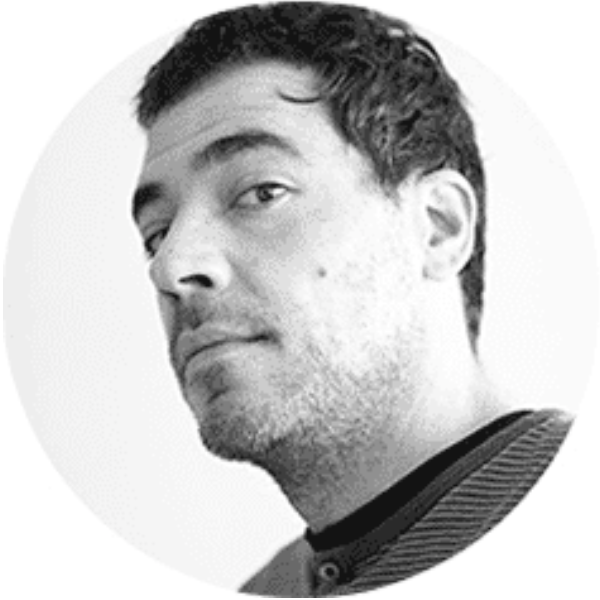INTERACTIVE ENVIRONMENTS AND PHYSICAL COMPUTING
Natural Elements
Faculty: Angel Muñoz & Cristian Rizzuti

Credits: Programming and Physical Computing Seminar 2018/19
“Nature is always in motion, never at a standstill” – H. Plummer, Light in Japanese Architecture
Natural elements communicate to one another through complex processes that can inspire design practices. Gaining a deeper understanding of those elements and the systems they compose can provoke an innovative line of thinking and designing. It becomes particularly interesting when natural processes are linked to technology within a physical computing framework.
How would we design with natural elements? Natural phenomena such as light, wind and water can be used as direct design drivers. The building envelope is an interesting element to investigate as it is in direct contact to the surrounding and is exposed, at times, to severe environmental conditions. How can we take advantage of the facade of a building to harvest and utilise its location within the building system. As designers and architects, we spent our lives examining and creating our built environment and as people we interact with it on daily bases. The possibilities to reimagine and recreate the facade as a dynamic and functional element are endless and many researchers have made attempts to contribute to the design field with projects on the topic.. The Interactive Environments and Physical Computing seminar focuses on researching and exploring the motion produced by natural elements and through designing with them to create interactive facades where these elements are the lead actor.
Learning Objectives
At course completion the student will:
- will broaden and deepen the concepts of programming and physical computing;
- be able to sense the natural elements and control several actuators;
- to develop facades that interact with natural elements.
Faculty

Angel Muñoz is a Programmer from La Rioja in Spain. Passionate about art, science, music and retro-futurism, he started programming (self-taught) at the early age of 9. In 2001 he moved to Barcelona where he began to work in international advertising agencies (EURO RSCG and Doubleyou). He also worked in the interactivity and multimedia departments for brands like Coca-Cola, AUDI, Danone, SEAT, Adolfo Dominguez, and more, winning various prizes in international advertising festivals such as Cannes, El Sol, among others.
In 2006, looking to extend the digital world to the physical world, he began developing an interest in open hardware and studied Electronic Product Design obtaining a Higher Vocational Training Qualification. He then began collaborating with the Hangar Medialab. Since then he has also been collaborating on various projects, also with IAAC and the Fab Lab Barcelona Pro team, including The machine to be another, Omnipresenz. First Vision, Smart Citizen. Angel is now part of the IAAC Academic team as Physical Computing Expert.
angelmc.studio

Cristian Rizzuti is an interactive media artist working in Barcelona. Graduating in Visual and Multimedia Art, Cristian has achieved an M-IA Master course at IUAV University of Venice focusing on interactive immersive environments. After his studies, Cristian has presented his works in major events and locations in Europe, such as Sonar Barcelona, MAXXI museum Rome, Venice Biennale, ZKM museum Karlsruhe. Always inspired by Science and mathematics, Cristian has focused his personal investigation on the role of human perception and the definition of synesthetic spaces and emotional sounds connected to the body. Being inspired by digital arts, live media and interactive experiments, Cristian’s works can be described as light sculpture installations.
cristianrizzuti.com